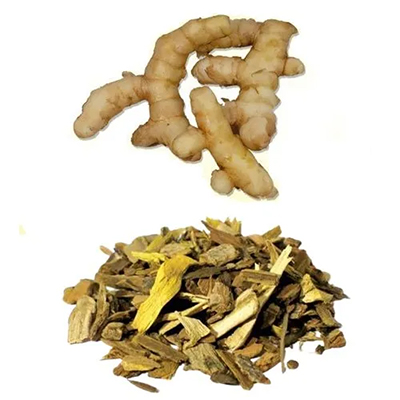On This Page
Madanaphala – Randia dumetorum
Introduction
Madanaphala, commonly known as Emetic nut is one of the commonly used herb as antiinflammatory, antiviral, antifungal and antibacterial agents. The name Madana means it produce horripulation and discomfort. It is also known as Vamana, because it is the best emetic drug. It is the most commonly used emetic drug in Ayurveda used in thirteen different forms. It is also known for its antiinflammatory and antimicrobial actions.
Dr.Gupta’s IAFA have been studying on readily available herbs for the purpose of alleviating allergic condition. Our experts studied on Madanaphala and proven the plant’s therapeutic activities like Emetic, Diaphoretic, Antispasmodic, Antiinflammatory, Antibacterial, Antifungal, Antifungal actions etc. Madanaphala can be used in various diseases like pain, fever, inflammation, skin diseases etc. Methanolic and ethanolic extract of fruits of Madana posess antiinflammatory and antiasthmatic actions. It also have hepatoprotective action and can be used in alcohol induced liver damage. The extract of Madana also have anti-implantation activity. Nowadays Madanaphala is also used for treating allergic conditions.
Action of Madanaphala – Randia dumetorum in Allergies
IAFA experts have successfully proven the antiallergic property of Madanaphala. The plant contains phytoconstituents like dumetoronin A, B, C, D, E&F, randialic acid A, randialic acid B, citric acid, tartaric acid, tannins, pectin, mucilage etc. These phytoconstituents aids the antiallergic, anti-inflammatory and antimicrobial property of Madanaphala. It can be effectively used to cure allergic conditions.
Vernacular Names
| Native Names | |
| Sanskrit Name | मदन, गर्दन, पिण्ड, नट, पिण्डीतक, करहाट, मरुवक, शल्यक, विषपुष्पक |
| Hindi Name | Mainphal |
| English Name | Emetic nut |
| Malayalam Name | Manga-kai |
| Kannada Name | Maggarekayi |
| Marathi Name | Gelaphal |
Botanical Name
Randia dumetorum
Family
Rubiaceae
Morphology of Madanaphala – Randia dumetorum
- Large shrub or small tree
- Branches are horizontal and rigid
- Leaves are obovate and opposite
- Inflorescence is leaf opposed cyme, solitary
- Flowers are white or yellowish
- Fruits are globose, berry
- Seeds are often immersed in pulp and angled
Ayurveda reference of Madanaphala – Randia dumetorum

Geographical distribution of Madanaphala – Randia dumetorum
Madanaphala plant grows throughout India but very common in hilly areas.
Phytoconstituents of Madanaphala – Randia dumetorum
- The plant contains phytoconstituents like dumetoronin A, B, C, D, E&F, randialic acid A, randialic acid B, citric acid, tartaric acid, tannins, pectin, mucilage etc.
Parts used of Madanaphala – Randia dumetorum
- Fruit
- Seeds
Dosage of Madanaphala – Randia dumetorum
- Powder(churna)- 3-6 g
Medicinal Properties of Madanaphala – Randia dumetorum
- Jwaraghna – relieves fever
- Sulahara-relieves pain
- Sophahara – relieves swelling
- Vamaka – induces vomiting
- Pakwasaya sodhaka – cleanses intestine
- Kushtaghna – useful in skin diseases
- Amasaya sodhaka- cleanses stomach
- Vranahara – useful in wounds

Have A Health Issue?
Consult Online
- Dr. Sahil Gupta (B.A.M.S., M.H.A.)
Ayurvedic Allergy Specialist
CEO & Founder of IAFA®
Home remedies of Madanaphala – Randia dumetorum
- Ayurveda is an ancient system of medicine popular in India. The treatment system adopted by Ayurveda is purely based on naturally available plants and plant products. Madanaphala is one of the most widely used plant part. Due to its high medicinal value it is used in treating many diseases like,
- To induce vomiting (Vamanartha) – Madanaphala is made into decoction and taken to induce vomiting.
- In Fever (Jwara) – Madanaphala is mixed with Piper longum and is administered with hot water.
- Pain in flanks (Parsva sula) – Paste of Madanaphala is prepared from sour gruel and applied over naval to relieve pain in flanks.
- In Skin diseases (Kushta) – Madanaphala is taken and made into a paste. It is then applied over skin.
- In Swelling (Sotha) – The Madanaphala is made into a paste with sour gruel and applied over area of swelling.
- In Wounds (Vrana) – Madanaphala powder is used to apply over wounds.
- In Abdominal pain (Udarasula) – Powdered Madanaphala along with honeyis administered .
- In Cold (Pratisyaya) -Decoction of Madanaphala is taken to cure cold.
Ayurveda is an Indian system of medicine which uses medicines based on commonly seen plants and plant products. All the herbs used in Ayurveda vary in its phytoconstituents and action in body. Dr.Gupta’s IAFA have been conducting research studies to find out different phytoconstituents of herbs and their action in body. Thus IAFA provides of safe and effective treatment for a wide range of diseases, mainly allergic diseases all based on Ayurveda.
Reach IAFA for safe herbal remedies for all your ailments!!!










